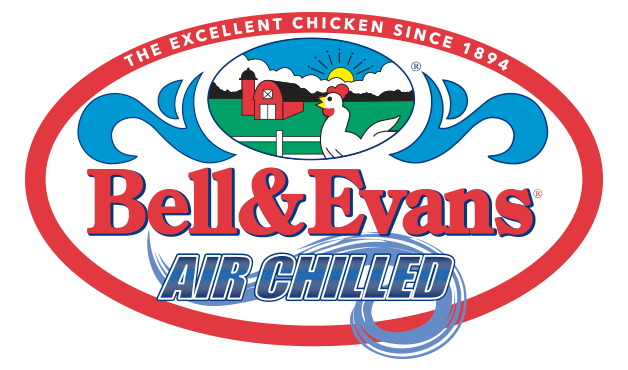It’s the week of Thanksgiving, and now through the end of the year there’s a lot of conversation around food. It’s a good time to talk about what we feed our flocks. If you believe you are what you eat, then you also probably care about the diet of the animal you eat. Bell & Evans chickens enjoy fine dining every day!
There are five major differences that make our feed program the best in the poultry industry.
- 100% of our chicks receive feed immediately at hatch. Not only that, but the feed is organic and pelletized into tiny, balanced, digestible bites of corn, soybean, vitamins and minerals. At traditional hatcheries, chicks do not receive feed. Other producers wait to provide feed to newly hatched chicks at the farms. For some, that could be three days after they hatch. Bell & Evans chickens get a healthy and hardy start to life.
- We source 100% U.S. grown grains. There’s a real problem in this country with fraudulent and contaminated grain imports, especially so-called “organic” grains. We choose to purchase domestic grain because it allows us to support U.S. farmers and trace our grain back to the mills and feed producers. We can verify its quality and origin, and the U.S. Department of Agriculture and U.S. Organic Certifiers can verify our processes. The big commodity producers opting for cheaper, easier-to-obtain imported grain don’t really know what they’re getting or where it’s coming from.
- There are no cheap by-products or DDGS in our feed. Our feed recipe is a wholesome blend of corn, soybean, oregano oil, cinnamon and yucca root. Distiller’s dried grains with solubles (DDGS) is a by-product of ethanol production and used by many producers as a cheap feed substitution for corn and soybean meal. DDGS may contain traces of antibiotics that were used in the fermentation process. We’ve been raising chickens free from antibiotics for 20 years!
- We do not use hexane processing to produce our soybean meal. Let me tell you about the time I discovered hexane processing at our mill. It was back in the late 80s, and we were struggling with a bird health problem. I thought maybe there was mold in the rail car that transported soybean meal from the feed mill. I paid a visit to the mill and asked the operator to open the rail car so I could inspect it. As the door opened, a chemical-like odor poured out, like model airplane glue. I asked what it was, and the operator said it was hexane. Hexane is a petroleum by-product of gasoline refining and is highly explosive, toxic and a major air pollutant. I learned that hexane is commonly used as a cheap solvent to remove oil from the soybean protein and fiber (the latter two making up soybean meal used in feed). Also, hexane processing strips nutrients like Vitamin E from the meal. I vowed then to remove that poison from our process.
Since the early 90s, 100% of our soybean meal is extruded and expeller-pressed. In addition, all Bell & Evans fryer oil for our breaded products comes from our own expeller-pressed organic soybean oil. It’s a double win. Most other producers still use hexane processing for their soybean meal and then fry their chicken in that hexane-processed soybean oil!
- Our feed contains oregano oil, among other vitamins and minerals. In December 2012, the New York Times wrote an article about my use of oregano oil in our chicken feed. This is a practice I started in 2010, more than a decade after we started raising chickens without antibiotics, and I was exploring alternative, natural antibacterial sources. I mention the article as a timestamp because “oregano” has become somewhat of a buzz word in our industry today. More on that to come in a future blog. I can’t say for certain how other chicken producers use oregano except to say that it isn’t the same way I use it. My way is more expensive because it’s highly concentrated.
My point in all of this is that, as you serve The Excellent Chicken ® this holiday season, know with confidence you and your loved ones are enjoying chicken that also ate an excellent diet.


Is feeding corn the best grain for chickens? Is corn bad in general? As in has a lot of gmo’s in it already?
Hi Lori! We’ve tried other ingredients in our chicken feed over the past 125 years, and have found that corn and soy are the healthiest ingredients for our chicken feed. A consistently diet, free of meat and bakery by-products, free of chemicals and junk is the key to raising chickens without the need for antibiotics, which we’ve done for over 20 years. Corn is not bad–look for the organic label if you are interested in non-GMO corn. The corn and soy that go into our organic chicken feed is non-GMO, and 100% of it is purchased in the U.S., so we can be confident that it truly is organic, non-GMO feed. Not everyone can say that. And almost 50% of our chicken is Organic. We’re always innovating. Read our press release, where we announced last week how we’re helping farmers to grow more organic crops.